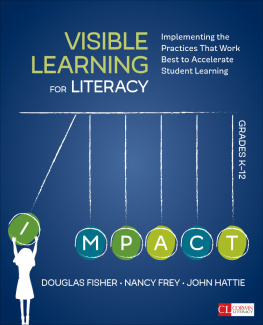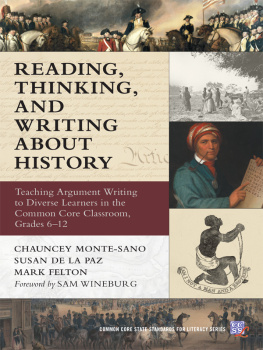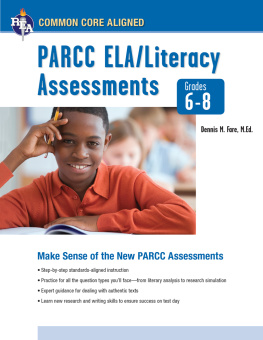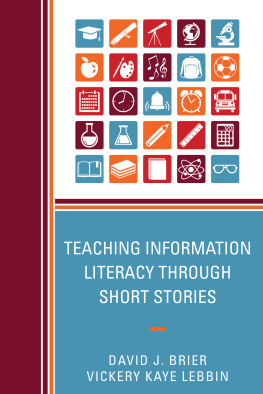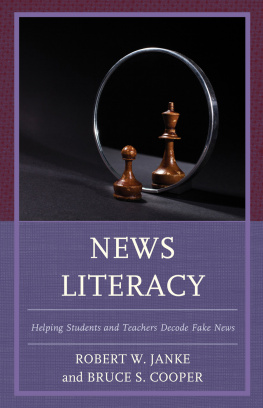NEWS LITERACY
The Keys to Combating Fake News
Michelle Luhtala and Jacquelyn Whiting

Copyright 2018 by Michelle Luhtala and Jacquelyn Whiting
All rights reserved. No part of this publication may be reproduced, stored in a retrieval system, or transmitted, in any form or by any means, electronic, mechanical, photocopying, recording, or otherwise, except for the inclusion of brief quotations in a review, without prior permission in writing from the publisher.
Library of Congress Cataloging in Publication Control Number: 2018001665
ISBN: 978-1-4408-6152-9 (paperback)
978-1-4408-6153-6 (ebook)
22 21 20 19 18 1 2 3 4 5
This book is also available as an eBook.
Libraries Unlimited
An Imprint of ABC-CLIO, LLC
ABC-CLIO, LLC
130 Cremona Drive, P.O. Box 1911
Santa Barbara, California 93116-1911
www.abc-clio.com
This book is printed on acid-free paper 
Manufactured in the United States of America
Contents
Introduction to News Literacy
The focus on fake news, alternative facts, and general media mendacity distracts us from a very real educational challenge: teaching students the skills and dispositions that make them careful and thorough researchers. This is hard work, and there are no easy recipes to facilitate the process. However, with carefully scaffolded lessons that nurture students to become increasingly savvy inquirers, readers, and writers, librarians and content area educators can help students meet these challenges and become informed, active citizens. To that end, we will unpack the research that measures students capacities for evaluating information, including the report by the Stanford History Education Group, Evaluating Information: The Cornerstone of Civic Online Reasoning, and provide tiered lesson ideas and resources for educators to use with their students to teach them to be savvy in their consumption and creation of information. We believe that it is essential that students become skilled at critically examining the information they encounter in order to be valid creators of new information and participants in global discourse.
Fighting the digital media revolutioneither personally or in our schoolsis a quixotic endeavor. Students must learn to read for bias, shift between written and visually communicated information, and maintain focus amid a myriad of opportunities to depart from the primary text via hyperlinks to supplemental information. In fact, they and we are already engaged in these tasks, and educators should embrace the teaching of the skills necessary to read well in a digital environment rather than refusing to allow the digital world into their classrooms. To be critical consumers of the information they encounter, students need to learn to discern the connections among the array of topics and information presented in multimedia forms in order to make meaning of an information collection. Reading in a web-based rather than printed text environment requires students to develop information literacy skills specific to that medium, skills that go beyond traditional printed text literacy strategies.
It is important to draw a distinction between consulting a mainstream media news site for information and getting news updates from a social media feed. The dissemination of click bait and intentionally misleading information that appears to be news largely happens via social media feeds. In May 2017, Salon provided this insight into web tools that are available to anyone doing searches or scanning news feeds in some popular social media:
Googles Fact Check. If your kid is researching information using Google News (either the site or the app), he or she may come across Googles Fact Check tag. A fact check only comes up if the story is controversial, which Google determines in various ways. Google doesnt label the story true or false, but it encourages users to do more digging.
Facebooks Disputed Tag. When stories have been flagged as iffy by users or Facebooks algorithm, Facebook checks with online fact-checkers Snopes and PolitiFact. If the stories are questionable, Facebook puts a Disputed note on them. Like Google, Facebook doesnt label the story true or false, but adding the Disputed tag should prompt kids to investigate further.
Twitters Verified Accounts. Since so many people, including kids, get their news from Twitter, its important to know whether tweets are legit or from a hacker, a fly-by-nighter, or another bad actor. Twitters Verified Accounts add more stability and accountability in an effort to thwart false information, bullying, and audience manipulation. The company uses a thorough vetting process to determine whether a user is who they say they are and displays a blue check mark next to a verified users name (Knorr).
To justify their expectation that students read only printed material, teachers anecdotally cite their concern that students comprehension skills are eroding, as is their persistence with lengthy and complex texts, as though the tangibly printed words remove distraction and inherently invite engagement. Yet it does not make sense to resist the infiltration of the web into the classroom. We become less relevant if we do not embrace the teaching of information literacy (using information from any source) so that students develop into sophisticated consumers of digital and print media. In some ways, digital media further empowers the reader to control the reading process and experience. Web reading is (or can be):
- Nonlinear in its thinking requirements.
- Nonhierarchical in its organizational strategies.
- Nonsequential in its presentation.
- Multimedia (which requires significant visual literacy skills).
- Interactive so that readers control the pace and flow of the reading, not the writer, and can even offer comment on the substance of the writing.
Instead of becoming distraught about the possible adaptive changes to our brains as the means of reading evolves, we should be developing new pedagogy around literacy instruction to embrace these changes and maximize student potential. Graphicacy is a vital skill as more and more information is conveyed via sketches, diagrams, charts, and other forms of iconic representation or data visualization. The infographic is now mainstream in our lexicon and our content communication. Savvy readers evaluate nontext features like graphs and images. This isnt an innovation of the World Wide Webthere are charts and graphs and images in booksbut the variation of the media and the volume of it in the media (since were no longer constrained by pages and printing costs) are different and thus worthy of a new strategy. Students need to develop the ability to unpack and make meaning of the multimedia components in a digital text and synthesize the meaning they derive from each component.
These are sophisticated skills. They are high on Blooms taxonomy. To dismiss the reading strategies necessary to understand the presentation of ideas in digital texts is to misunderstand or ignore the value of these textsand their permanence. It is imperative that administrators and educators embrace the new media and invest in the professional development necessary to nurture students literacy development in the digital age.
As veteran educators with 50 years combined experience as both social studies educators and library media specialists, the authors, Michelle and Jacquelyn, bring to this issue and this pedagogy a wealth of resources and classroom-tested lessons that educators (librarians and their content area colleagues) can adopt, adapt, and implement. Collected and explained here is the model for research they can use, along with copious lessons that can be used with individual students or whole classes to reinforce and build information literacy skills at any point in their development.
Next page

